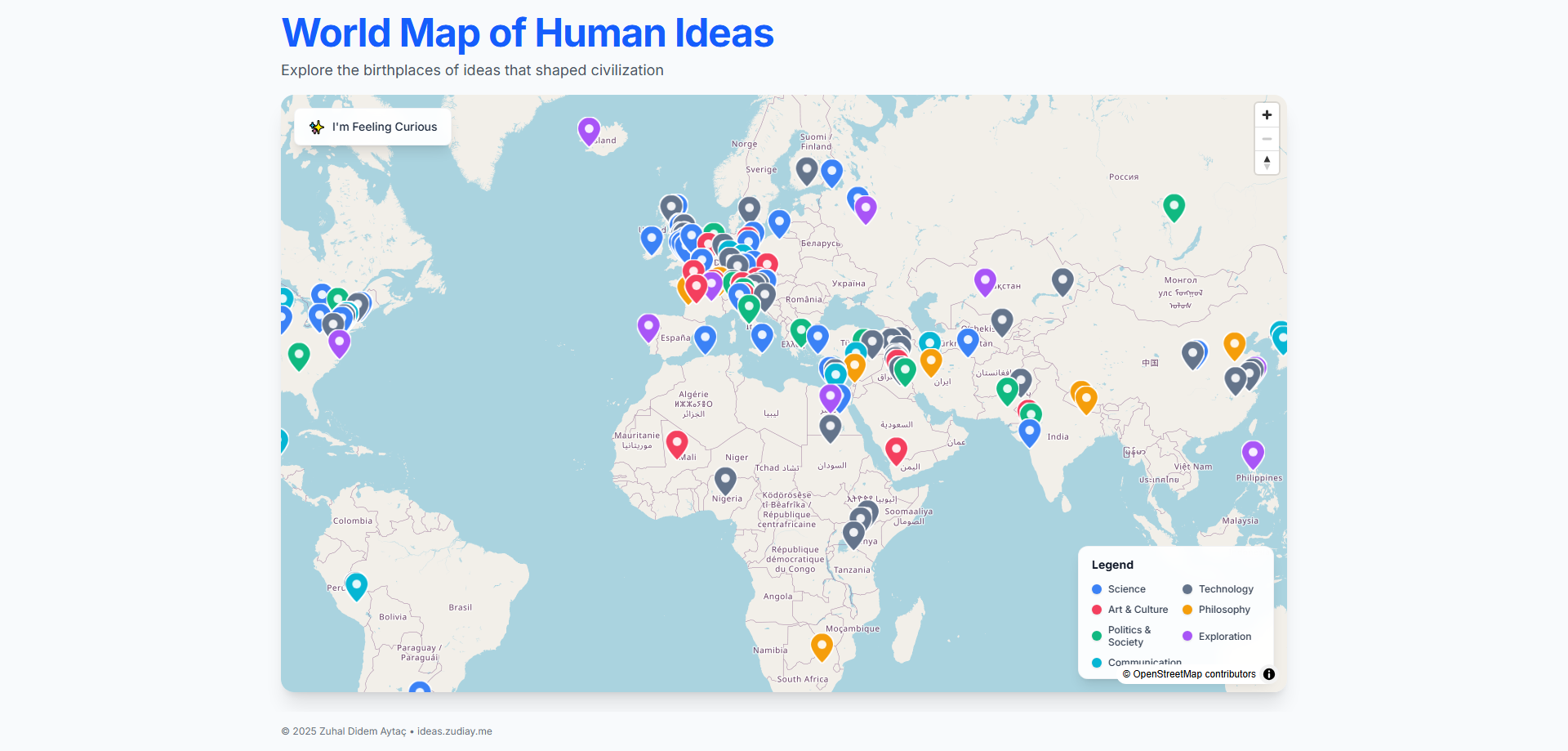1. Seeing “The Map of Human Ideas” Through a Creative Lens
I’ve always believed that creativity is a conversation across time — and The Map of Human Ideas feels like the visual proof of that. Imagine opening a massive, living constellation where every star represents a groundbreaking thought — from Einstein’s relativity to the rise of the internet. That’s what this project does.
It’s not just a digital map — it’s a museum of imagination, a tribute to curiosity itself. When I first explored it, I felt like I was walking through the collective brain of humanity. Each connection between ideas — say, how the Enlightenment paved the way for modern democracy — reminds me that innovation never happens in isolation.
What makes it creatively stunning is how it transforms complex intellectual history into something playful and intuitive. You don’t read ideas here — you see them unfold, linking centuries of human progress like constellations in the sky. It’s the kind of tool that makes you realize creativity isn’t random — it’s evolutionary.
2. A Disruptive Perspective: Can It Replace Traditional Knowledge Tools?
Now, let’s talk disruption — because The Map of Human Ideas doesn’t just catalog knowledge, it reimagines how we interact with it. Traditional encyclopedias or academic timelines give you linear facts. But this? It gives you a web of wonder.
Could it replace tools like Wikipedia or Google for knowledge exploration? Probably not entirely — those are about information retrieval, while The Map of Human Ideas is about inspiration discovery. It’s a creative playground, not a fact-checking engine.
But that’s exactly what makes it disruptive. It fills the emotional and cognitive gap that traditional tools miss — the moment when curiosity strikes but direction is unclear. For creators, writers, students, or product thinkers, this map can spark those “aha!” moments that no search algorithm can replicate.
In a way, it’s redefining what it means to “learn.” Instead of looking for answers, you’re encouraged to look for connections. That’s a small revolution in itself.
3. The Demand Factor: How Users Are Embracing This Knowledge Odyssey
Here’s the honest truth — people crave meaning more than ever. We’re flooded with information, but The Map of Human Ideas gives context. It tells us why ideas matter, not just what they are.
From what I’ve seen (and based on its growing buzz on Product Hunt, with 422 upvotes and lively discussions), users aren’t just curious — they’re emotionally invested. Creators use it for inspiration, students use it for learning, and thinkers use it to see how the past echoes into the present.
The acceptance rate? I’d say it’s surprisingly high for such an abstract concept. Why? Because it’s built on a simple truth — we all want to understand how ideas are born. It turns abstract curiosity into a hands-on, interactive experience.
There’s a universal appeal in tracing the roots of genius. Whether you’re a philosopher or a startup founder, exploring this map feels like joining the same creative lineage that connects Da Vinci, Ada Lovelace, and Elon Musk.
4. Future Survival: Rating Its One-Year Outlook (⭐️⭐️⭐️⭐️☆)
If I had to rate The Map of Human Ideas on its one-year survival, I’d confidently give it 4 out of 5 stars.
Here’s why:
- Opportunities: The product sits at the sweet spot of education, design, and curiosity — a combination that’s rare and powerful. Its ability to visualize complex ideas gives it massive potential for growth in edtech, creative tools, and even museum exhibits.
- Risks: However, it’s a niche concept. Without continuous updates or community-driven expansion, it risks becoming a static curiosity instead of a living ecosystem. Engagement will depend heavily on storytelling and user experience — not just content volume.
- Survival Strategy: If the creators open it to user contributions, interactive layers, or educational collaborations, this could evolve into the Google Maps for human thought.
So, will it survive? Absolutely — if it keeps inspiring as it informs. Curiosity never goes out of style, and The Map of Human Ideas captures it perfectly.
Final Thoughts
The Map of Human Ideas is more than a product — it’s a celebration of how human imagination evolves. It’s a creative atlas of our shared intellectual DNA, bridging centuries of genius through design and storytelling.
When I use it, I don’t just learn history — I feel connected to it. And that’s the kind of experience no textbook or Wikipedia page can replace.
If you’re someone who loves to ask “Where do great ideas come from?”, this is your answer — mapped beautifully, idea by idea.









